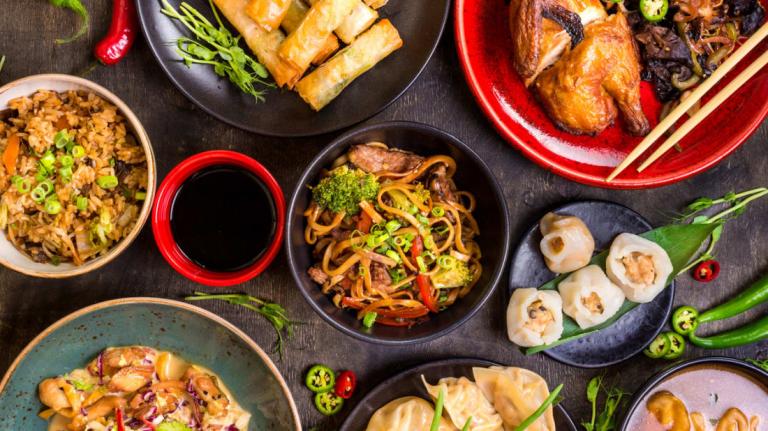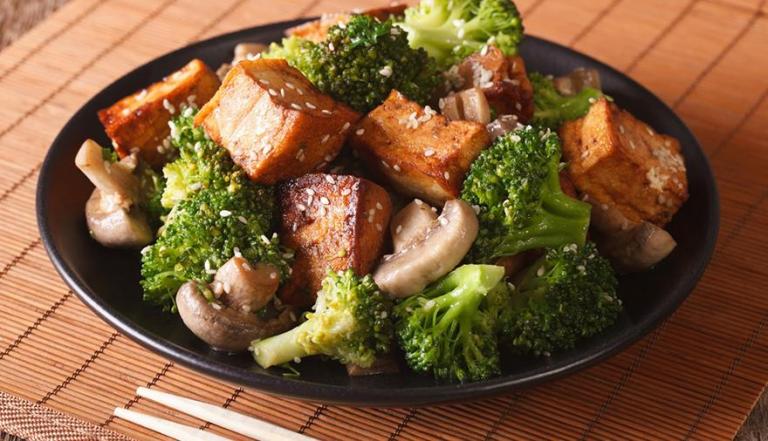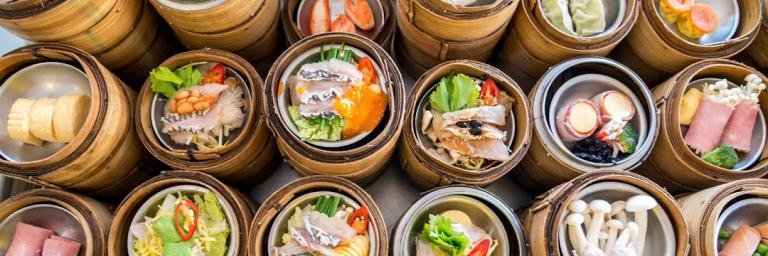Chinese food
5 min readSome think Chinese culinary culture originated with Yi Yin(c.1630-1550BC),the prime minister of the Shang Dynasty.Others consider it date back to legendary Peng Zu,who cooked chicken soup and cured Emperor Yao’s disease and lived more than 800 years.Research shows that China initiated the culinary art as early as the Shang and Zhou Dynasties.With the growth and development of productivity and the economy during various periods,people have been always exploring new cooking techniques.From the Spring and Autumn Period to the Warring States Period,the Chinese dishes began to be separated by southern and northern tastes,which were settled in the Tang Dynasty.In general,southerndishes emphasize freshness and tenderness,while northern dishes are relatively oily and frequently use ingredients with strong tastes,such as shallot and garlic.

As time went by,distinct local flavors were added to Chinese dishes.Based on regional features,Chinese cuisines have been divided into eight main schools:Shandong cuisine,Sichuan cuisine,Guangdong cuisine(also known as Cantonese cuisine),Fujian cuisine,Jiangsu cuisine(also Huaiyang cuisine),Zhejiang cuisine,Hunan cuisine,and Anhui cuisine.Each of these schools has its own long history and characteristic traditional cooking techniques.
Shandong cuisine,consisting of Jinan cuisine and Jiaodong cuisine,is representative of northern China’s cooking,and its cooking techniques have been widely absorbed especially in northeast China.Seafood is a major component of Shandong cuisine.
Shallots and garlics are frequently used as seasonings as a result Shangdong dishes usually taste pungent.Soups are given much attention in Shandong cuisine:thin soups are clear and fresh,creamy soups are thick and taste strong. Quick-frying,boiling,stir-frying,and pan-frying are commonly-used cooking techniques.Typical dishes include Sweet and Sour Yellow River Carp,Sea Cucumber with Crab Roe,and Braised Whelk.
Known more commonly in the West as Szechuan cuisine,Sichuan cuisine consists ofChengdu cuisine and Chongqing cuisine. Originating in Sichuan Province,western China,it enjoys an international reputation for its spicy and pungent flavor.As a matter of fact,Sichuan cuisine boasts a variety of flavors,featuring sour,sweet,tongue-numbing,andhot.After being introduced from South America around the end of the 17th century,hot pepper has been a must in Sichuan cuisine because it helps reduce the internal dampness of those living in humid Sichuan.Pepper,Chinese prickly ash,and ginger are necessities,too.In addition,garlic and fermented soybean are also frequently used in the cooking process.The common cooking techniques are sauteing,stir-frying without stewing,dry-braising,and dry-stirfrying.The region’s warm and humid climate also requires sophisticated food-preservation techniques,such as pickling,drying and smoking.Some typical dishes are Sauteed Shredded Pork in Spicy and Chili Sauce,Dongpo Pork,Sauteed Diced Chicken with Peanuts and Chili,Mapo Bean Curd,and Fish Soup with Pickled Vegetables.
When it comes to Sichuan cuisine,hot pot has to be mentioned.Plates filled with any combination of meat,seafood,and vegetables are placed around a communal pot filled with spicy chicken stock.To meet the requirement of those who cannot enjoy spicy food,mandarin duck pot was invented with half spicy stock and half plain chicken stock.Set atop an electric hot plate or over hot coals,the stock simmers,and then you can cook whatever you like in it.In the chilly winter season,hot pot is favored by many people,while nowadays hot pot is gaining national popularity even in hot summer days.

Familiar to Westerners as Cantonese cuisine,Guangdong cuisine originates from China’s southern Guangdong Province and has developed in Guangzhou,Huizhou,Chaozhou and Hainan Island,and has enjoyed domestic and international popularity.To the Cantonese,everything that walks,crawls,flies,or swims is edible.The basic cooking techniques include stir-frying,steaming,roasting,deep-frying,braising,and stewing.As the climate is hot in Guangdong,the cuisine doesn’t use as much spice as Sichuan cuisine,bringing out the natural flavor of the ingredients.The dish tastes fresh,crisp and tender.Typical dishes include Roasted Suckling Pig,Sauteed Sliced Beef with Oyster Sauce,Baked Chicken in Salt,and many others.
Combining Fuzhou cuisine,Quanzhou cuisine and Xiamen cuisine,Fujian cuisine holds an important position in China’s culinary art.During the middle Qing Dynasty,Fujian officials and literati promoted the spread of Fujian cuisine,which is characterized by the choice of seafood and mountain delicacies,fine slicing techniques,various soups and broths,and exquisite culinary art.Typical dishes include Steamed Abalone with Shark’s Fin and Fish Maw in Broth,Tai’ji Smashed Taro,and Litchi Pulp.
Jiangsu cuisine,also called Huaiyang cuisine,is popular in the lower reaches of the Yangtze River,including Huai’an,Yangzhou,Suzhou,and Shanghai.
Using fresh and live aquatic products as the main ingredients,it stresses the light,fresh and sweet flavors.Its carving techniques are delicate,of which the melon carving technique is especially well known.5 Basic cooking techniques include stewing,braising,quick-frying,and stir-frying.Typical dishes are:Deep-fried Mandarin Fish in Sweet and Sour Sauce,Boiled Salted Duck,Braised Tortoise and many others.
Comprising regional cuisines of Hangzhou,Ningbo,and Shaoxing,Zhejiang cuisine wins its reputation for freshness,tenderness,softness,smoothness,and mellow fragrance.Main cooking techniques for Zhejiang cuisine are quick-frying,stir-frying,deep-frying,simmering and steaming.Typical dishes are Steamed Grass Carp in Vinegar Sauce,Braised Dongpo Pork,Hangzhou Roast Chicken,Songsao Shredded Fish Soup and so on.
Hunan cuisine consists of local cuisines of Xiangjiang Region,Dongting Lake and Xiangxi mountain areas. Like Sichuan cuisine,it is also characterized by thick and pungent flavors,such as hot and sour.Chili,pepper and shallot are usually necessities.It is also renowned for its frequent use of preserved meat in cooking.Hunan cuisine specializes in braising,steaming,stewing and so on.Typical dishes include Sauteed Diced Chicken with Chili Pepper,and Xiangxi Sour Pork.
The development of Anhui cuisine was closely related with Anhui businessmen.Anhui businessmen became influential during the Tang and Song Dynasties,promoting the spread of the cuisine.The highly distinctive characteristic of Anhui cuisine lies not only in the elaborate choices of the cooking materials but also in the strict control of cooking process.Braising andstewing are the most basic cooking methods used to preserve the original taste and nutrition of the ingredients.Generally speaking,the food is slightly spicy and salty,and ham is often added to improve taste and sugar is added to increase freshness.Typical courses include Braised Tortoise with Ham,Bamboo Shoots with Ham and Dried Mushroom,and Li Hongzhang Hotchpotch.









